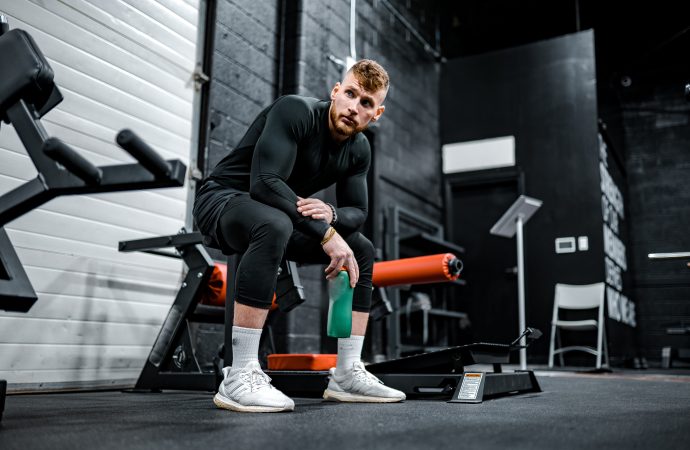Physical limitations can be a major roadblock for anyone trying to stay active and fit. But if you’re someone with a disability, those challenges can feel even more daunting. However, just because your body might work differently than others doesn’t mean that exercise is off the table altogether – in fact, there are plenty of
Physical limitations can be a major roadblock for anyone trying to stay active and fit. But if you’re someone with a disability, those challenges can feel even more daunting. However, just because your body might work differently than others doesn’t mean that exercise is off the table altogether – in fact, there are plenty of ways to modify workouts so that they can be tailored specifically to your needs and abilities! Whether you have a mobility issue or need extra support during certain movements, this guide will help you discover new strategies for staying active and healthy regardless of any physical obstacles. So get ready to break down barriers and explore the world of fitness on your own terms – it’s time to unlock your true potential with no limits!
What is a disability?
A disability is a physical or mental impairment that limits one or more major life activities. There are many different disabilities, and each person experiences them differently. Some disabilities may be obvious, such as being blind or deaf, while others may be more subtle, such as having arthritis.
No one should have to live with limitations that don’t reflect their abilities. You can modify your workouts to suit your abilities as a person with a disability by taking into account the limitations that you face. For example, if you have arthritis, you may find it difficult to do certain exercises that require lots of energy or flexibility. Consider modifying these exercises accordingly.
If you’re unsure about how to modify an exercise for your own abilities, ask a trusted friend or family member for help. They may know something about your particular disability and be able to provide some advice on how to adapt an exercise to fit your needs.
What are the different types of disabilities?
There are a number of different types of disabilities, which can make it difficult to participate in sports or other physical activities. Some disabilities, such as paralysis, may prevent people from participating in activities that require movement. Other disabilities, such as cerebral palsy, may cause difficulties with coordination or mobility.
People with disabilities often have to modify their workouts to accommodate their specific needs. For example, someone with paralysis might need to adjust the intensity and duration of their workouts to ensure that they are still getting the benefits they need. People with cerebral palsy may need modifications to their equipment or exercises so that they can perform them safely and effectively.
It is important to consult with a doctor or other medical professional if you are concerned about modifying your workout routine based on your disability. They will be able to help you determine what modifications are necessary and provide advice on how best to achieve those modifications.
How do you determine if you have a disability?
There are a few things to consider when determining if you have a disability. The first is whether you have a visible physical impairment that limits your ability to do common tasks or activities. You may also have a mental impairment that limits your ability to think, communicate, or work.
If you can’t perform basic functions due to an impairment, you may have a disability. However, not all disabilities are visible and not all impairments are mental. In fact, many people with disabilities have impairments that don’t manifest themselves in obvious ways. For example, some people with cerebral palsy have difficulty using their arms and legs but may still be able to work normal jobs.
There’s no single test for determining if you have a disability, as the definition of disability varies from person to person and from situation to situation. However, there are some guidelines you can follow in order to determine if you may qualify for special accommodations or adjustments at work.
The first step is to ask yourself questions about your limitations and how those limitations impact your day-to-day life. For example, do you need help taking care of yourself? Do you find it difficult to complete everyday tasks? Are there certain activities that make your pain worse?
Next, ask your doctor or other qualified medical professional about any impairments that might be affecting your ability to function as normal. This is important because doctors often know more than anyone else about what will cause specific problems and how best to
How can a person with a disability modify their workouts to suit their abilities?
There are a lot of different ways that people with disabilities can modify their workouts to suit their abilities. For example, if you have a disability that limits your mobility, you may need to adjust your workout routine to include exercises that are easier for you to do. You also may want to use lighter weights and shorter repetitions when working out on machines or using resistance bands because these types of equipment are more accommodating for your level of ability. If you have a disability that significantly affects your balance or coordination, you may need to take special precautions when doing cardio exercises like running or jumping. And finally, if you have a disability that affects your vision or hearing, you’ll want to make sure the environment in which you’re working out is safe and comfortable for both of those senses.
There’s no one right way to modify your workouts based on your disability, and the best way to figure out what works best for you is by trying different things until you find something that feels comfortable and challenging. There’s no reason why you can’t reach your fitness goals – and even exceed them – regardless of whether or not you have limitations as a person with a disability.
Conclusion
No Limits offers modified workouts that make it possible for anyone to enjoy a challenging fitness experience. If you have a disability, whether physical or mental, our trainers can create an individualized program that is tailored specifically to your needs. Whether you are looking for a workout to help manage your chronic pain or want to improve your flexibility and balance, we can help. With our variety of programs, there is sure to be one that fits your needs and challenges you in the way you want it to. So get ready to take off all those limits and see what new heights you can reach with No Limits by your side!





















Leave a Comment
Your email address will not be published. Required fields are marked with *